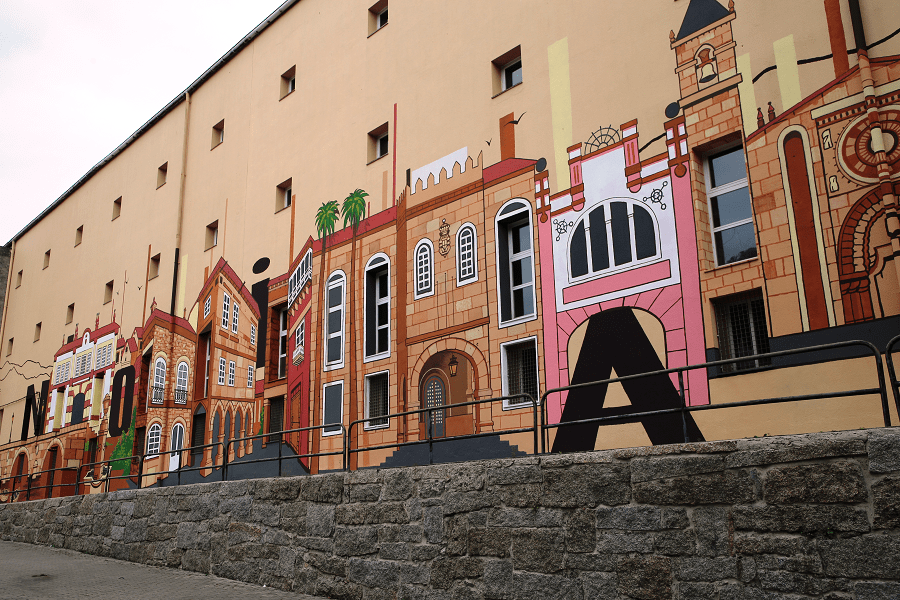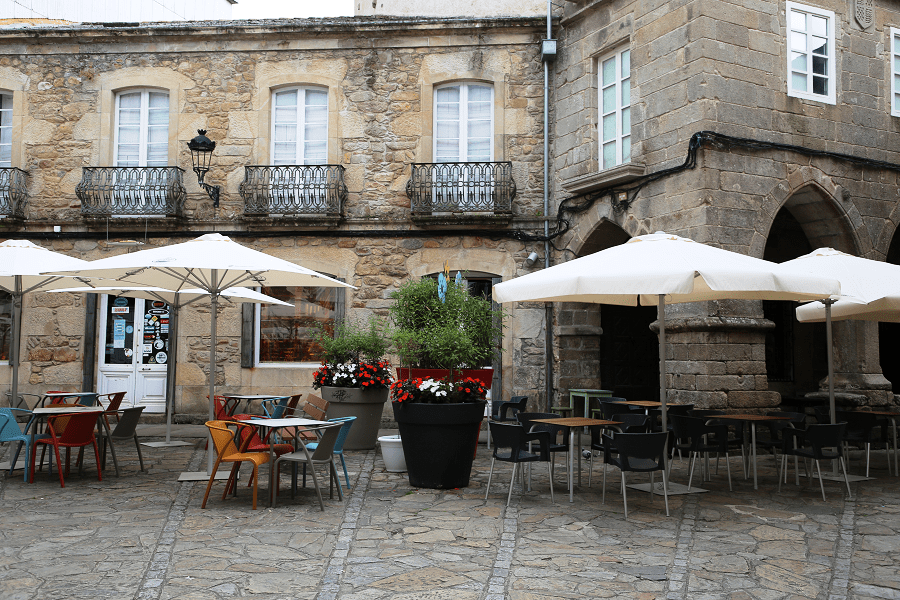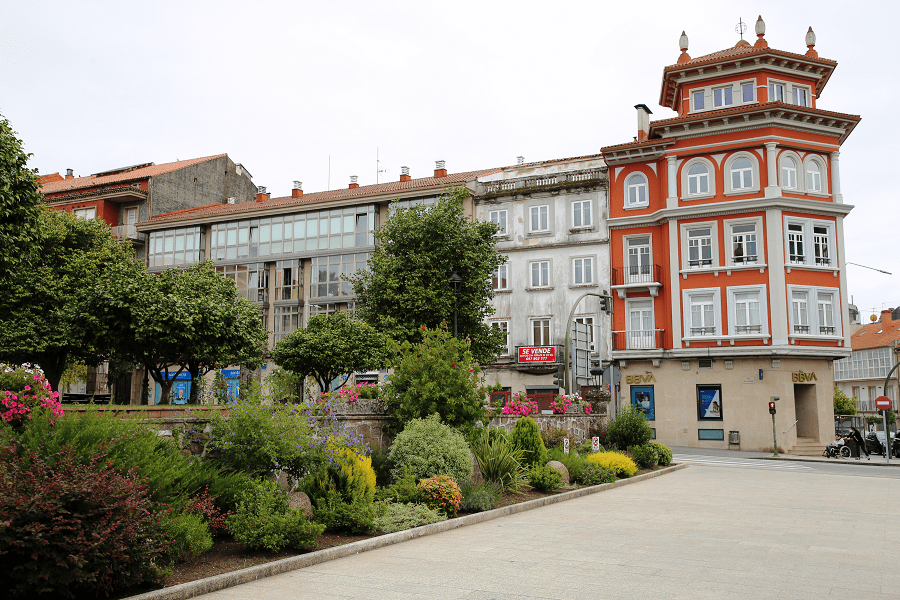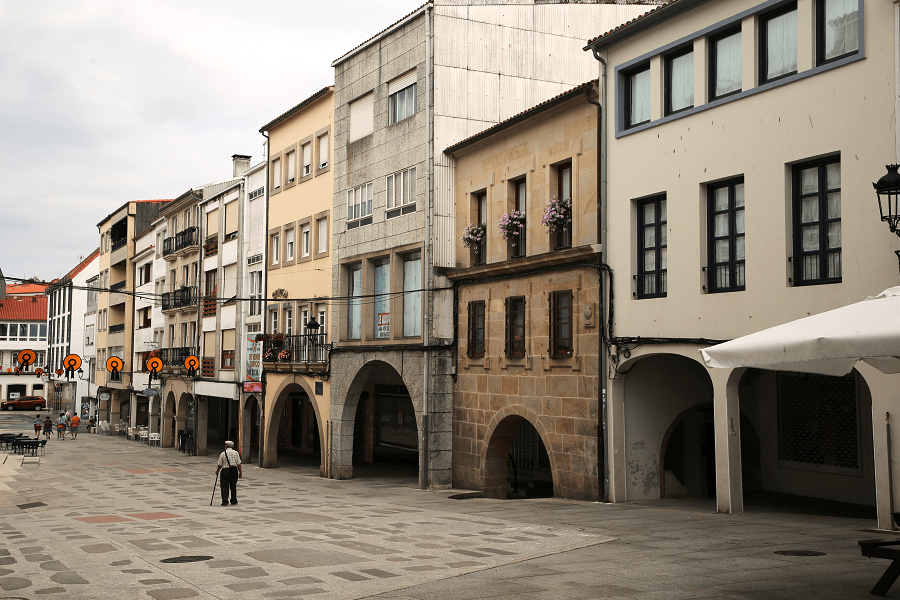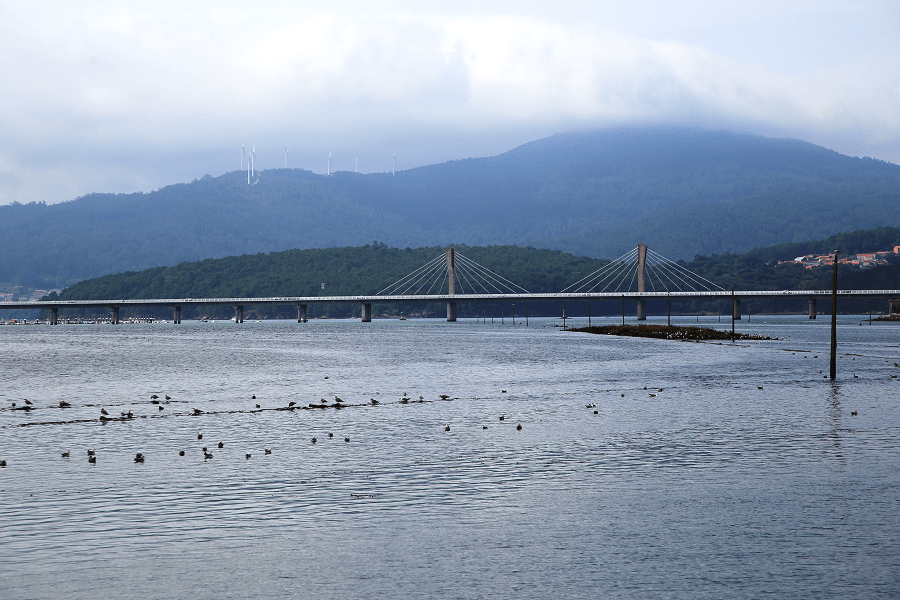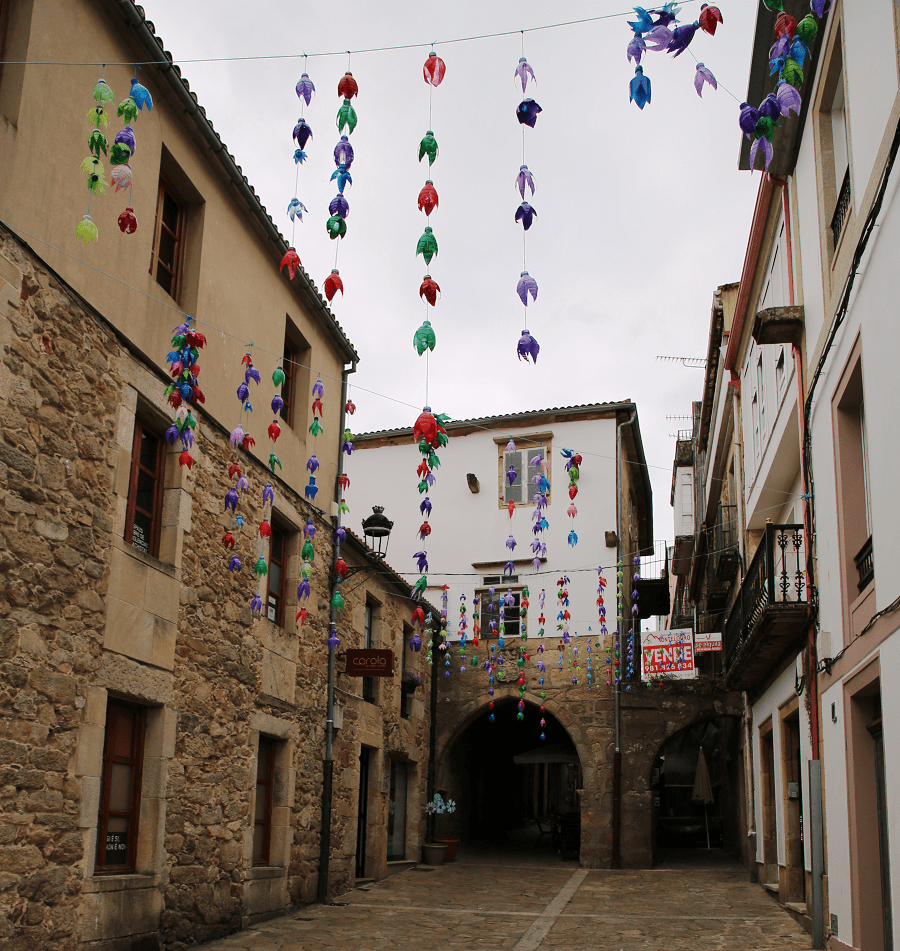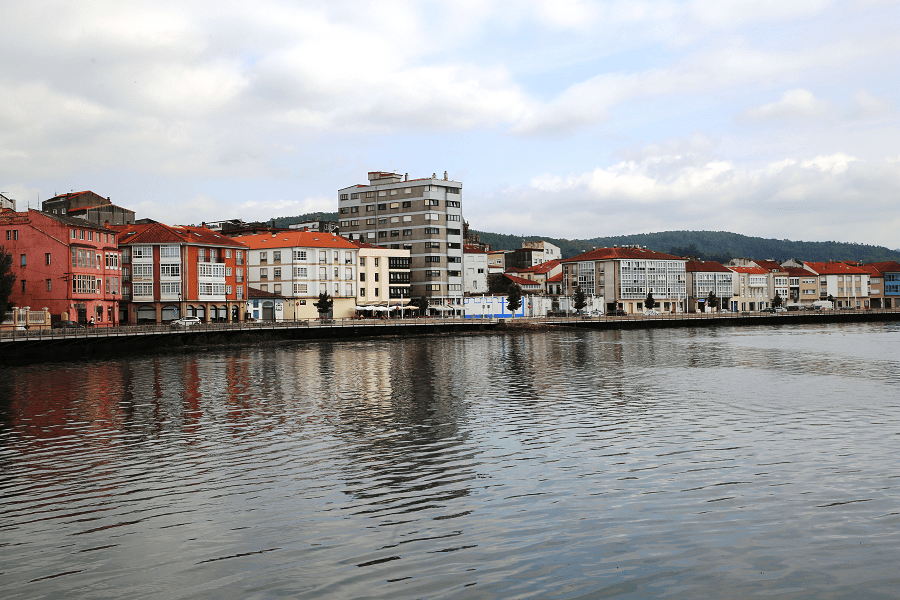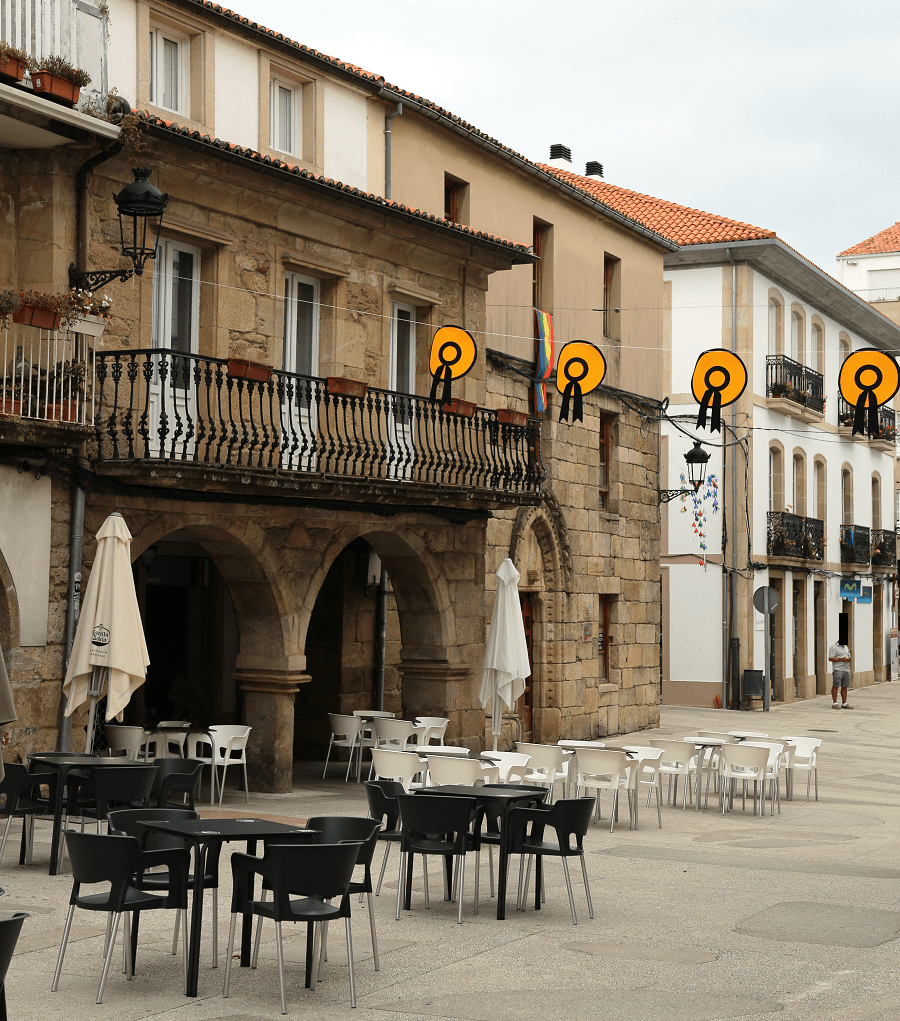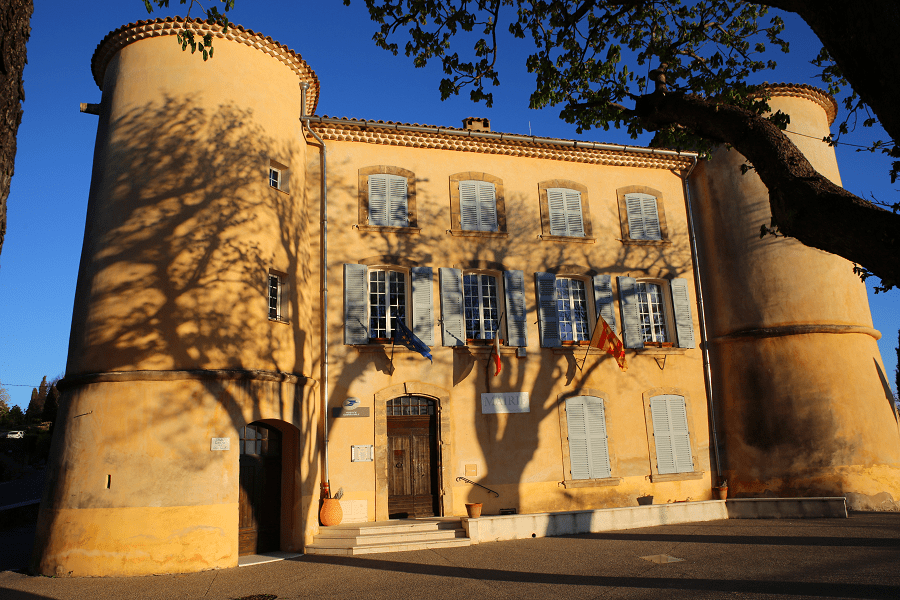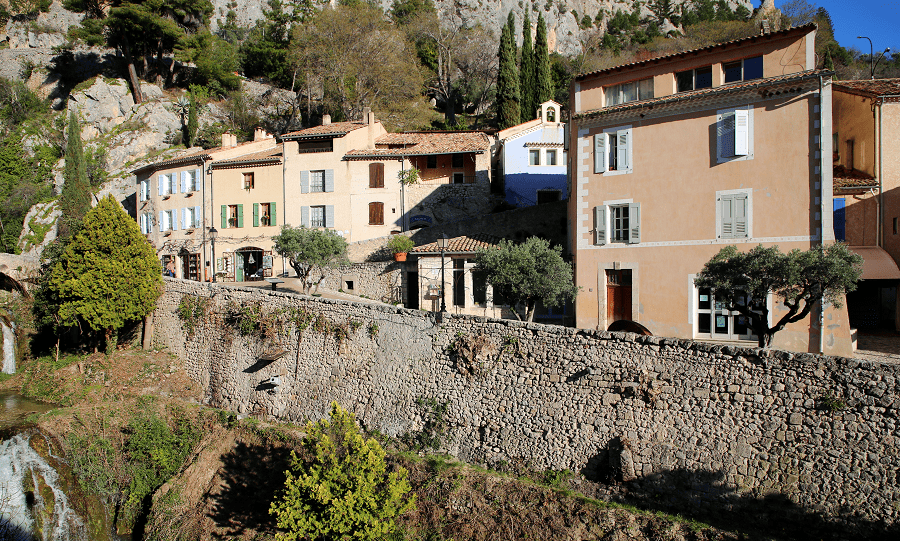Noia (Sp. Noya) is a municipality and a city that belongs to the province of La Coruña, in the autonomous community of Galicia, Spain.
The city is a part of the Rías Baixas coast of the Atlantic resorts of Spain.
Noia was a thriving commercial port during the Low Middle Ages, being at that time the third most important town of the bishopric of Santiago de Compostela, after the capital and the town of Pontevedra.
From that era it had preserved a notable old quarter, with a series of late Romanesque churches.
Main attractions
The city was founded in 1168, although a small older town with the same name already existed near the current village of A Barquiña.
Until the end of the 19th century, the town occupied the northern part of the river Traba compacted within its walls, but in the 20th century, especially in the second half, the town began to expand.
The historic center or old area, of medieval origin, is easily distinguishable by the natural limit of the sea and the river Traba, in addition to the roads that surround it, on which a wall once stood.
Many of the buildings in this area are clearly different from those in the rest of the municipality due to their traditional architecture.
In addition to this area, the outer expansion to the east is also considered the historic center, which corresponds to the Church of Santa María Nova and the entire area that surrounds it.
In the historic center, the town hall, the avenue, the promenade, the secondary and high school institutes of San Alberto and Virxe do Mar, the church of Santa María a Nova or the church of San Martín stand out.
The town celebrates the festivities of San Marcos, the Medieval Fair in the old town, or the patronal feast in honor of Saint Bartholomew.
Beaches
The largest beach in the municipality is the Testal beach, one and a half kilometers long, standing out for its system of dunes of high ecological value. Another important beach in the municipality is the 450 m long Boa beach, with calm waters and a wooden boardwalk.
Other beaches in the municipality are Taramancos beach, a continuation of Testal beach with rocky systems that divide it into small coves, and Boa Pequena beach next to Boa beach.
In the parish of Santa Cristina, between the towns of La Barquiña and Barro, there is a small beach where swimming is not recommended due to the poor quality of the waters in that part of the estuary.
Festivals
Numerous festivals are held in Noia, the most popular being the town festivals: the horse fair of San Marcos and the patron saint festivities of San Bartolomé.
April 25 (lasts three or four days) – Horse Fair of San Marcos. The livestock fair and the agricultural machinery fair stand out.
May 22 – Festivities of Santa Rita in Santa María de Argalo.
First weekend of July: Festivities of San Pedro de Boa.
July 16 – Our Lady of Carmen, patron saint of sailors. The procession stands out.
July 18 (lasts 3 or 4 days) – Fiestas del Obre
3rd weekend of July – Medieval Fair in the medieval quarter of the city.
July 25 – Festivities of Santa Cristina de Barro, which last from July 24 to 28.
Last weekend of July – Fiestas da Rasa (Santa Cristina de Barro).
August 15 – Pilgrimage to San Lois in Boa, Santa María de Roo and Santa María de Argalo.
August 24 (lasts 5 or 6 days) – Feast of great affluence in honor of San Bartolomé. The festivals, concerts and the pyrotechnic show stand out. It contains the Fiesta de la empanada, which is celebrated on the last Sunday in August.
How to get to?
From A Coruña 1 hr 13 min (110 km) via AP-9
From Santiago de Compostela 34 min (37.5 km) via AG-56 and CG-1.5
From Madrid 6 hr (634 km) via A-6 and A-52
Main information
Area: 37 sq. km
GPS coordinates: 42°47′06″N 8°53′16″W
Language: Spanish, Galician
Population: 14 274
Currency: Euro
Visa: Schengen
Time: Central European UTC +1, in summer +2
See here best sea and ocean resorts of France and Spain (223 objects)



